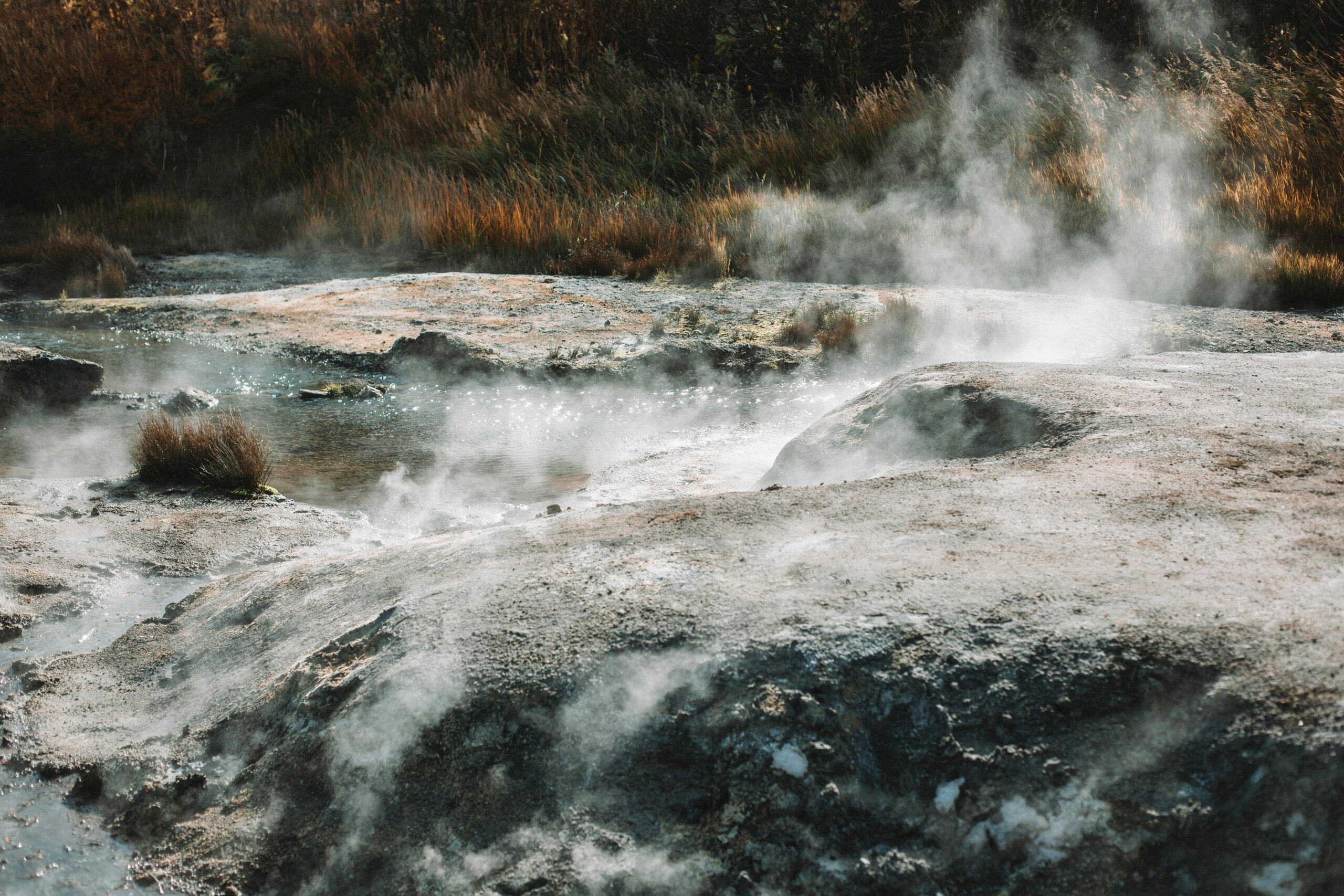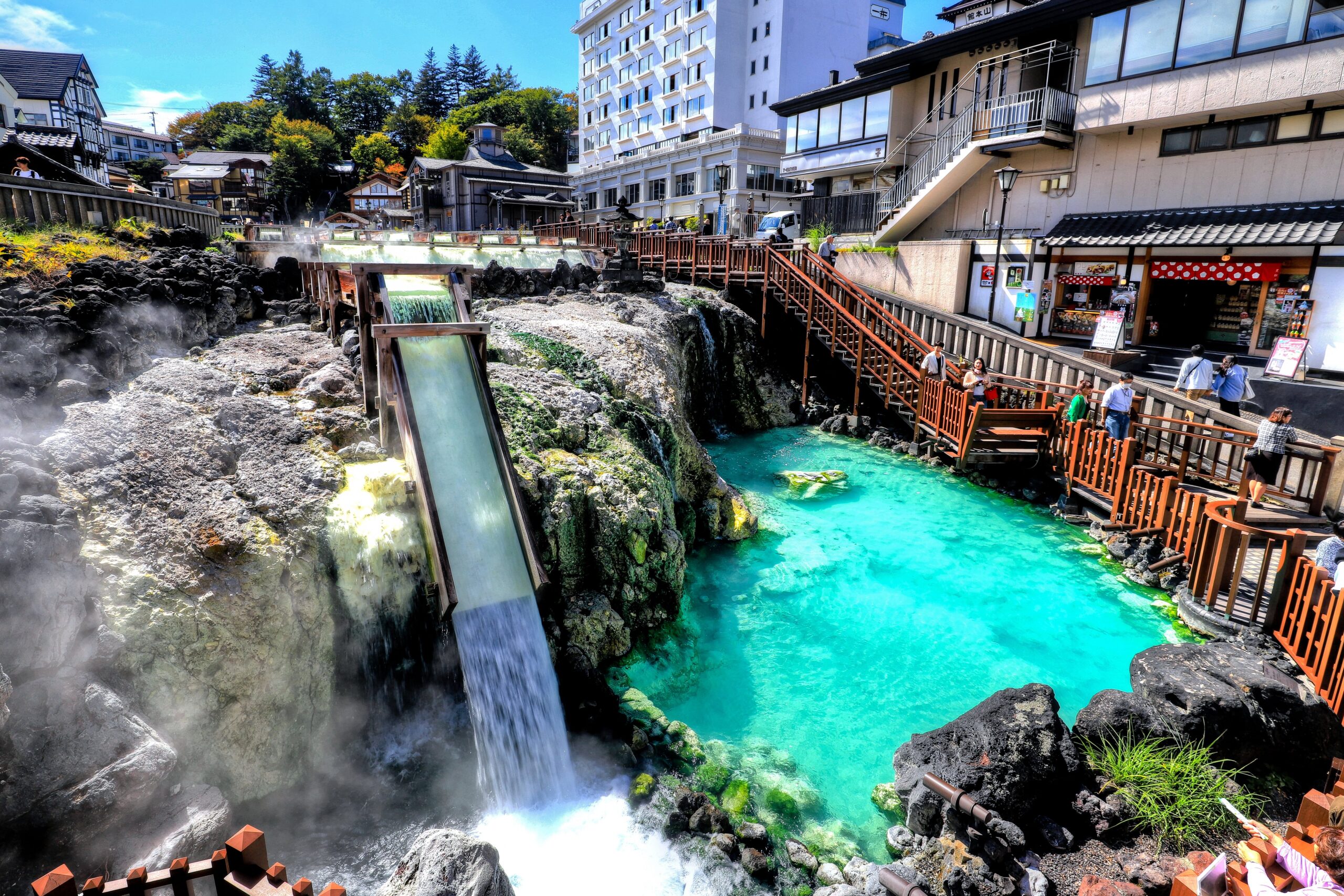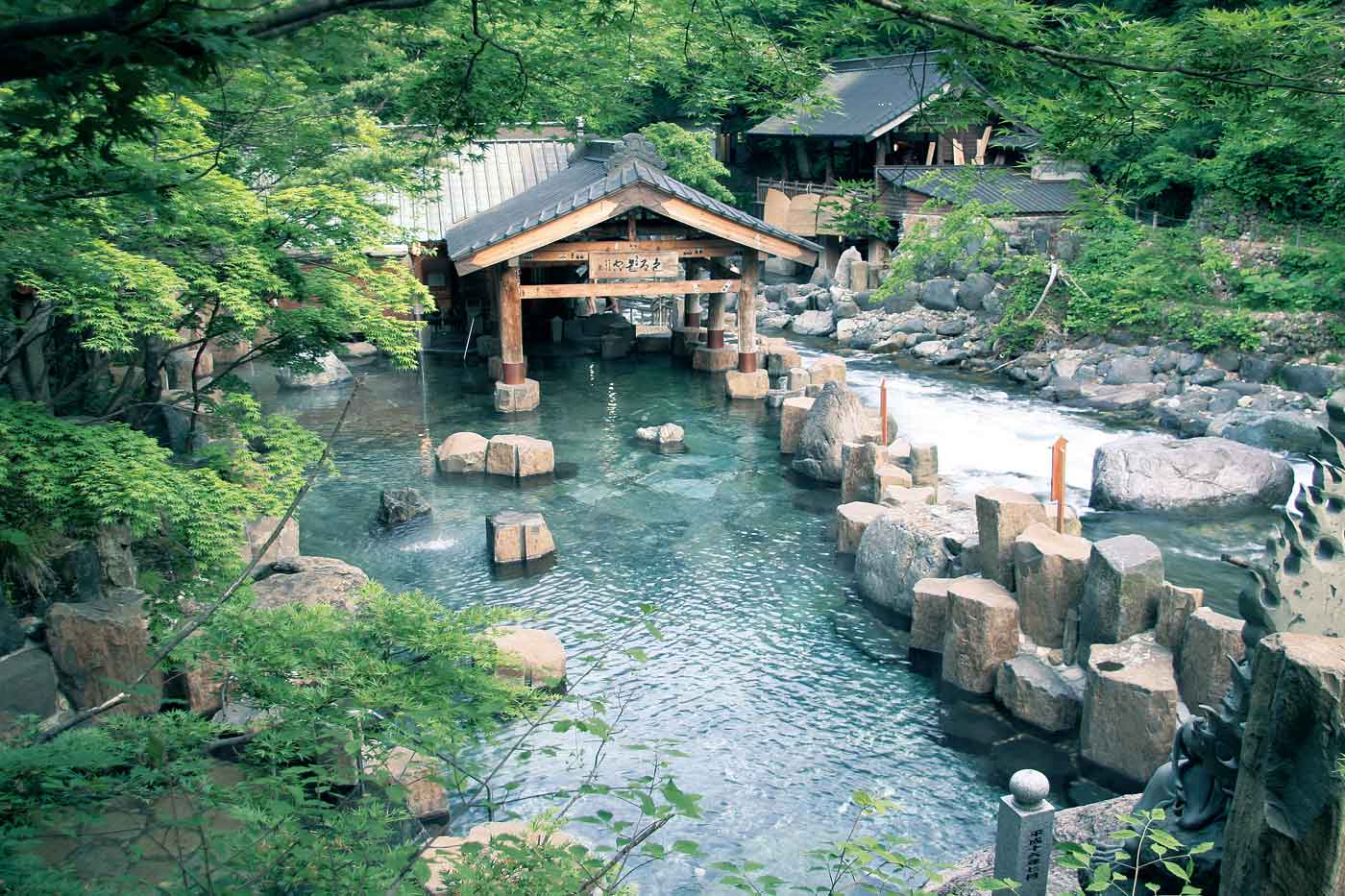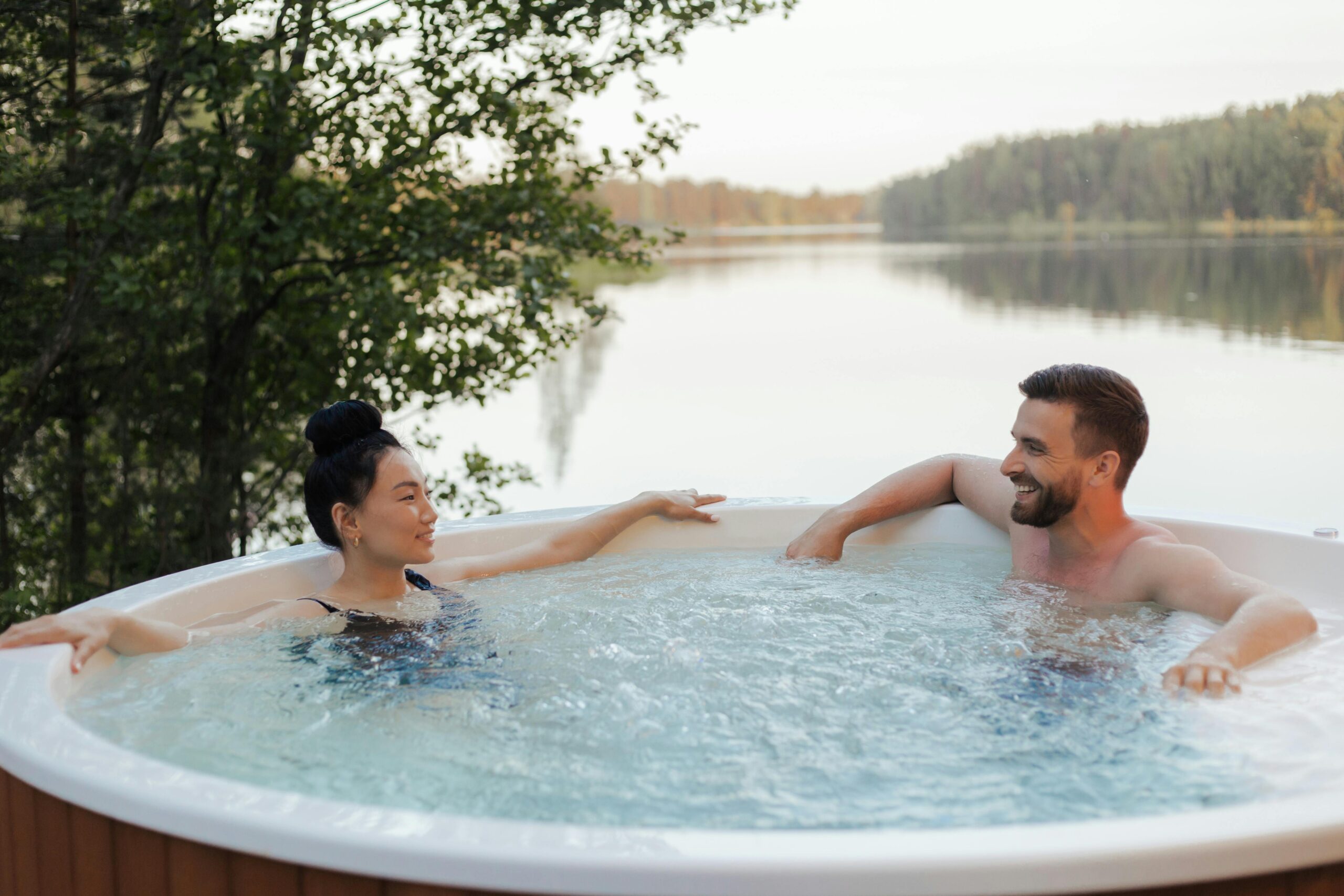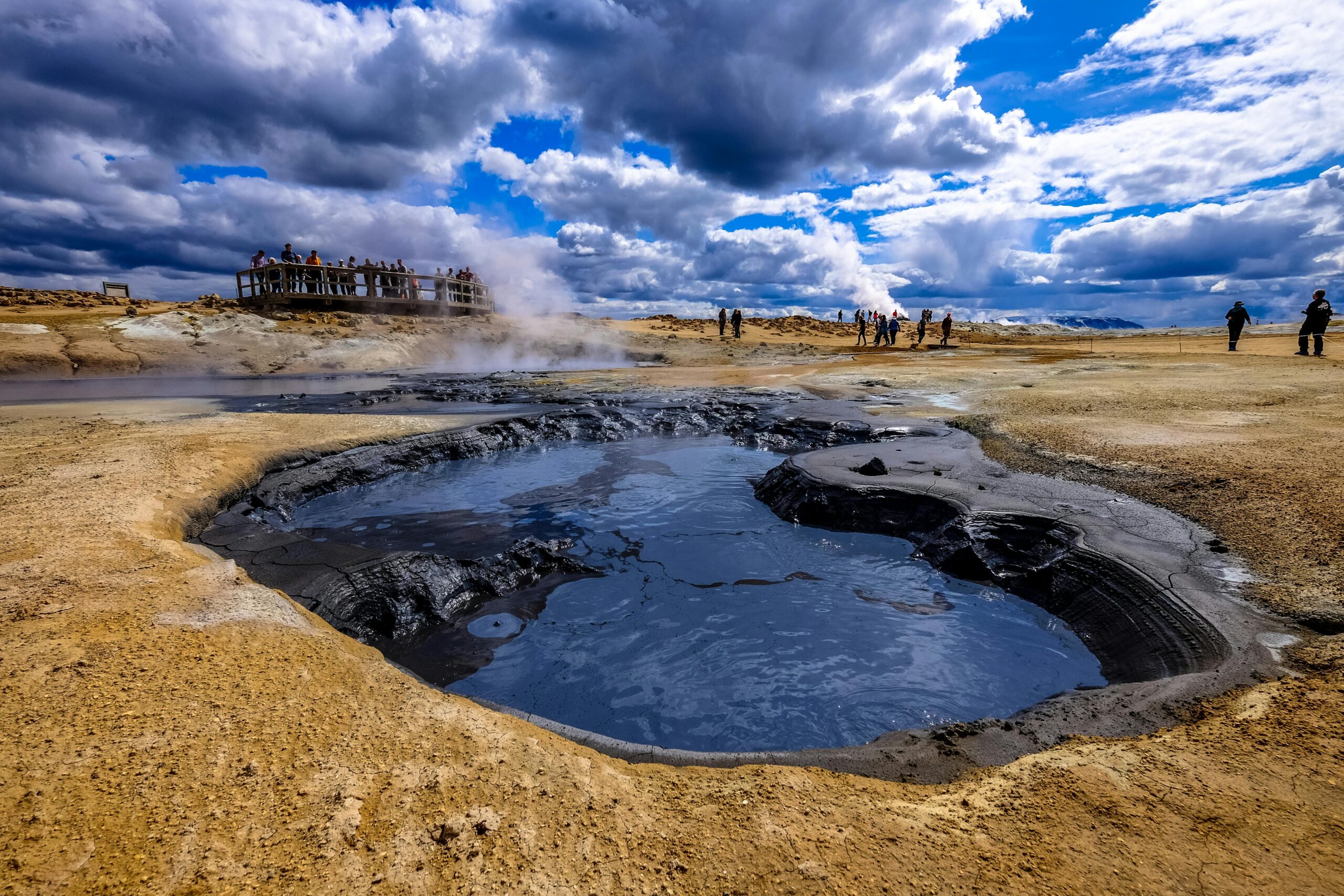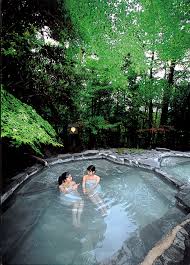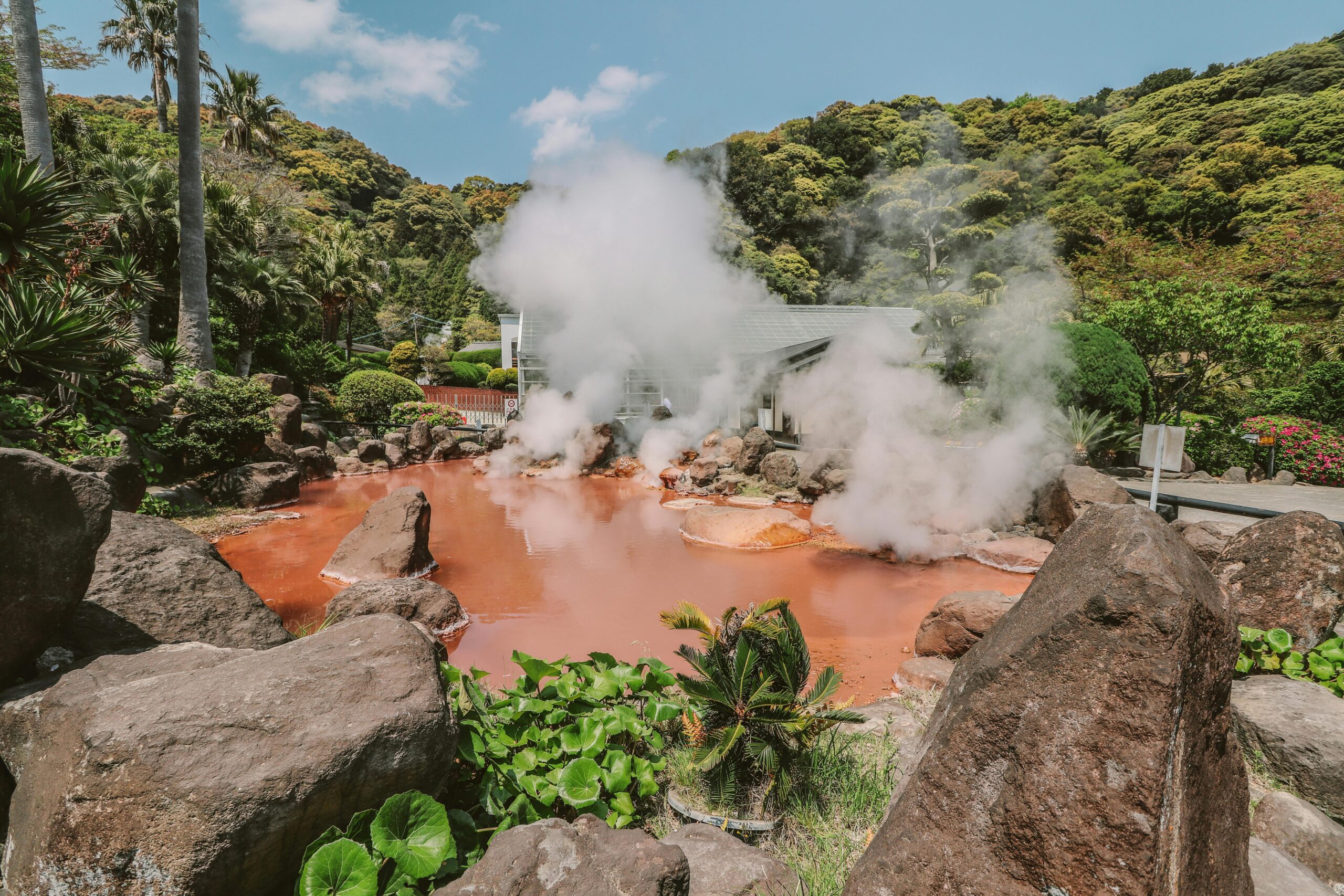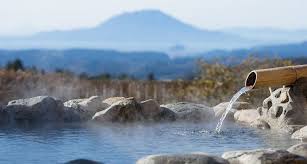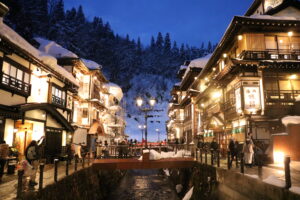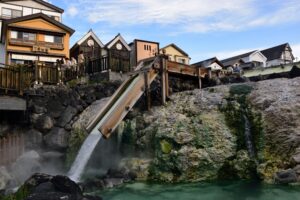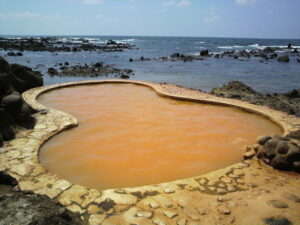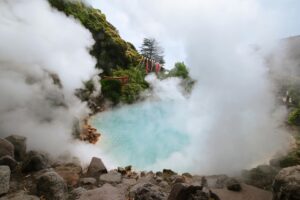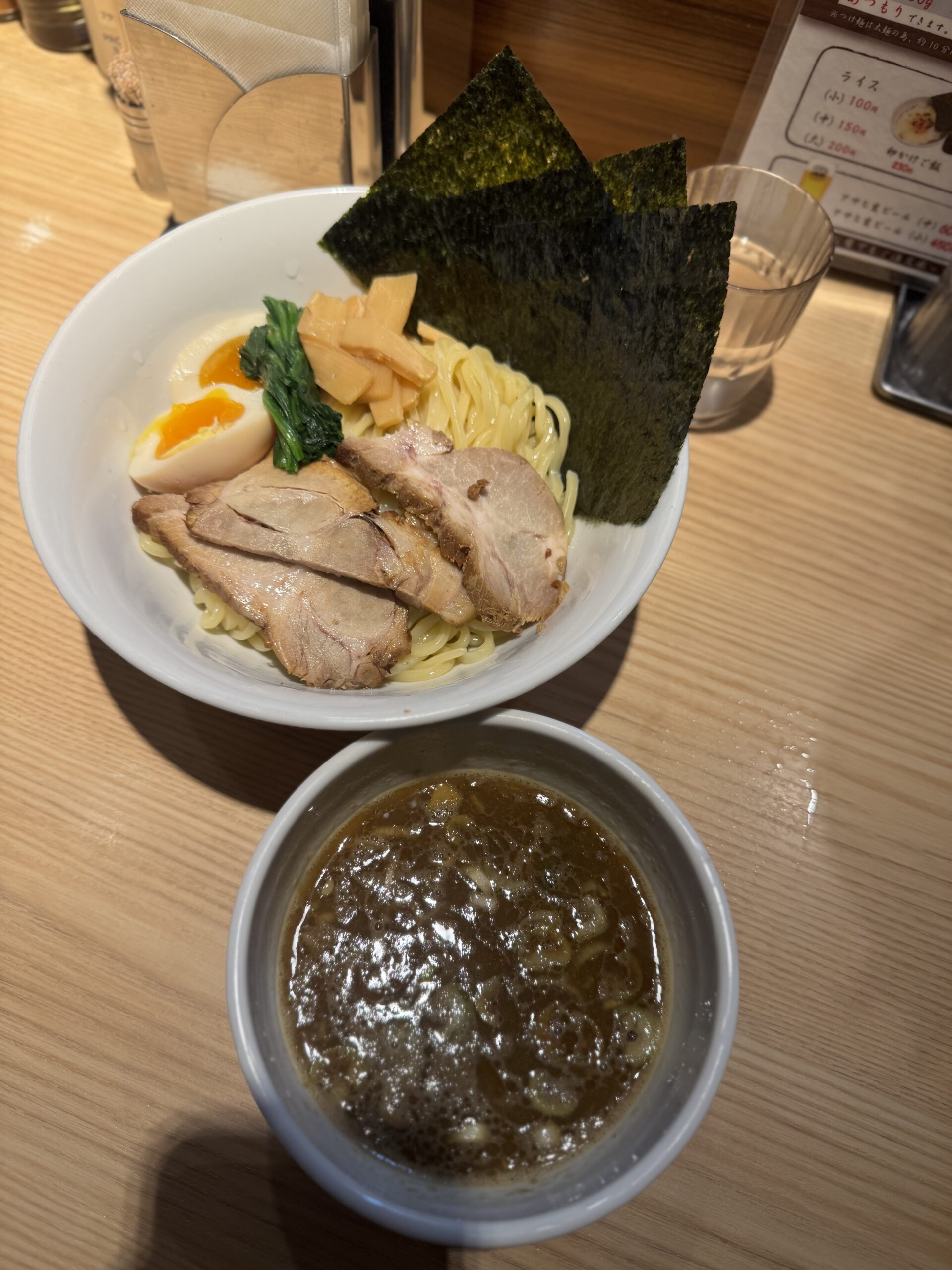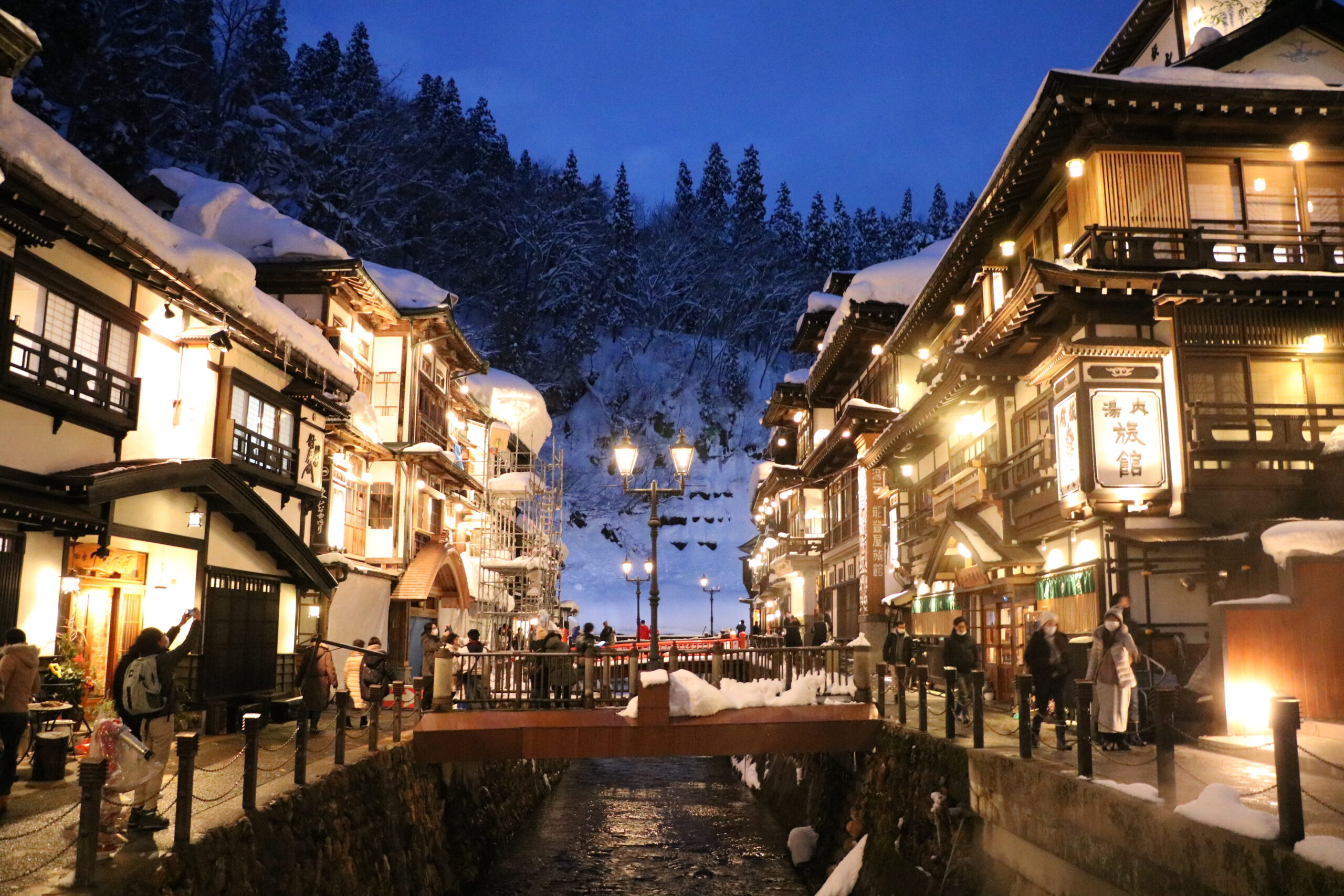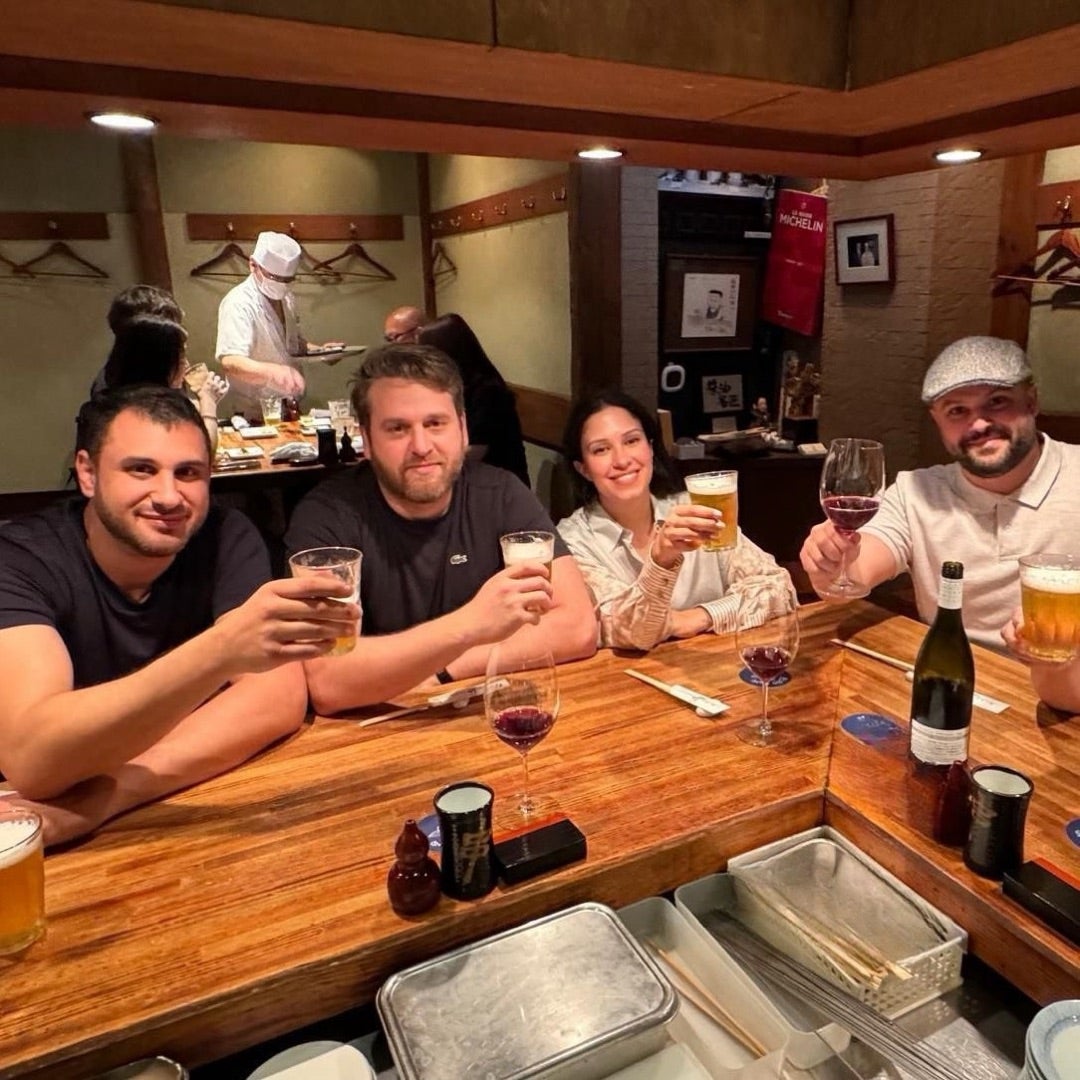

Top 5 Onsen In Japan: A Quick Walkthrough
Japan, the land of the rising sun, is not only confined to its Sakura trees in spring and maple leaves in autumn. Between December and March, most parts of the country turn into a winter wonderland. One of the key attractions during Japan’s winter is “onsen” and “onsen towns.”
Onsen are naturally occurring hot springs that spout mineral-rich water, water vapor, hot water, and beneficial gasses from the ground. There are 27,000 onsen sprinkled across the country, offering rejuvenating and healing benefits to both locals and visitors alike.
When I first visited an onsen, I was as shy as a mouse and wanted to take a quick dip and rush outside. But gradually I got accustomed to Japan’s deep-rooted bathing culture and it quickly turned to one of my favorite winter activities. The serene atmosphere, the healing properties, and the hot water amidst (hopefully) snowy background are sufficient to attract any soul from any part of the world. But before entering an onsen, it is best to educate yourself on the Japanese onsen etiquettes.
Before I begin my list, I will mention the different types of Japanese onsen:
- Ryokan (traditional inn) : These are traditional Japanese inns that provide onsen facilities for their guests. By booking a ryokan, you get to experience authentic Japanese hospitality and a peek into their culture and lifestyle. They offer sleeping facilities and traditional Japanese cuisine.
- Onsen Towns: They are towns built around onsen-rich areas in the country. Anywhere you look around these towns, you are treated with a scenic view and the exceptional steam coming from nearby onsen. They generally comprise of many accommodation facilities.
- Kashikiri Onsen (Private Onsen): Private onsen are generally allocated for specific groups or individuals to enjoy the serene onsen experience without the interference of others. They can be specific to a room or allocated for accommodation guests, providing them privacy and comfort.
- Rotenburo (Outdoor Onsen): These are natural onsen found amidst nature in a beautiful and serene environment. One of their major benefits is their setting amidst lush green forests, or snowy mountains, giving a much-needed, soulful experience.
- Day-use onsen facility: It is one of the best budget-friendly onsen options, which allows users to use public baths on the go, providing a less immersive Japanese hot spring experience. It does not require you to choose accommodation or any other benefits.
In this article, I will include 5 best onsen in Japan that you must visit on your next trip.
Ginzan Onsen in Yamagata Prefecture
Ginzan Hot Spring is one of the most popular onsen towns, and it is comprised of traditional wooden ryokans surrounding the Ginzan River. The sight is straight out of a storybook, especially when a thick blanket of snow covers the onsen town. Apart from the onsen, there are also foot baths along the river, where you can soak your cold feet in warm water and enjoy hot matcha from one of the surrounding shops.
When I visited Ginza, I was worried of getting hungry and not finding food close by as it is located in a remote location, so I packed some traditional dango from an authentic Japanese restaurant. The owners were friendly and warm, which added value to our wonderful vacation in Yamagata.
The pedestrian-only streets, allow visitors to get a good view of the town and enjoy the winter paradise in peace. At night, gas lamps light up the streets, which forms a pristine backdrop for photo lovers. You can find ryokan onsens on either side of the street and at the farther end of the town, don’t forget to visit the Shirogane waterfalls.
Address: 85 Ginzan Shinhata, Obanazawa-shi, Yamagata-ken
Best time to visit: December to March (Winter)
Website: https://www.ginzanso.jp/english/
Kusatsu Onsen in Gunma Prefecture
It is one of the most renowned onsen towns in Japan, attracting visitors all around the year. The hot spring waters have a magical spell to cure every illness. In the middle of this town, Yubatake (spring water source) is situated which supplies onsen water to the entire town.
Traditional Japanese ryokans, are dotted along the streets. You cannot find private Japanese onsen here as the locals encourage public bathing. If you also want to experience having traditional sake and sushi during your trip, there are a bunch of options available.
Address: Kusatsumachi, Agatsuma District, Gunma Prefecture 377-1711.
Best time to visit: November – March (Autumn and winter)
Website: https://www.kusatsu-onsen.ne.jp/guide/en/
Koganezaki Furofushi Onsen in Aomori Prefecture
Imagine soaking in the natural hot spring, at the base of the sea of Japan, and watching the sunset with a blanket of colors in the sky. Too good to be true? What if I told you it is a picture-perfect scene in Aomori Prefecture! Furofushi is a mesmerizing Rotenburo Onsen, with a commanding view of the Sea of Japan.
It is a mixed-gender onsen, with separate women-only open-air onsen as well. The distinct colors of water, unharmed from its source, are believed to have healing properties and anyone who takes a dip, will never grow old or sick. Since the onsen is open only until 4 pm for day-use visitors, when the sun is still high in the sky, it is recommended to book accommodation in order to experience the full sunset and dining experience.
Address: Koganezaki Furofushi Onsen, Shimokiyotaki-15-1 Henashi, Fukaura, Nishitsugaru District, Aomori 038-2327
Best time to visit: Any time of the year during sunset.
Website: https://www.furofushi.com/english/
Tsurunoyu Onsen in Akita Prefecture
It is one of the most popular ryokans of Nyuto Onsen in Akita prefecture. The place becomes a winter paradise when thick snow covers the path and the onsen area. There are a total of four hot spring waters – white, middle, black, and waterfall and it is recommended to take a dip in each one of them to savor the benefits of all four.
Nyuto onsen is an onsen hopping hotspot in Akita, with seven different onsen offering day-use / ryokan setups. I have personally been mesmerized by the beautiful scenery around them and have ended up visiting all the onsen using the Yumeguri Pass (1,800 yen). If you wish to get the full experience of onsen hopping, it is better to stay overnight in Tsurunoyu onsen and take a dip in the others.
Address: Akita, Semboku, Tazawako Tazawa, Sendatsu, 沢国有林50
Best time to visit: December – March (winter)
Website: http://www.tsurunoyu.com/english.html
Beppu Onsen in Oita Prefecture
Beppu, is a small onsen city in Oita Prefecture. Famously called the hot spring capital of Japan, it houses nearly 2000 hot springs, making it Japan’s largest producer of hot spring water. It is popular for hot spring resorts that attract customers from all over the world.
In addition to onsen baths, Beppu is also famous for sand baths and mud baths, which provides a rejuvenating experience, most of which help cure chronic pains as well. While most onsen are meant for bathing, some , called Jigoku (Hells of Beppu) are meant only for viewing as the temperature in such hot springs reach 98 degrees celsius and are unfit for bathing.
There are seven popular onsen in Beppu that and you can try, providing a peek into the rich Japanese heritage, along with beautiful scenery.
Address: 1-15 Uenoguchi-cho, Beppu City, 874-8511 (City Hall 4F)
Best Time to Visit : November during Autumn
Website: https://beppu-tourism.com/en/
Written by Apoorva from India
Reading books in a calm environment is my guilty pleasure
